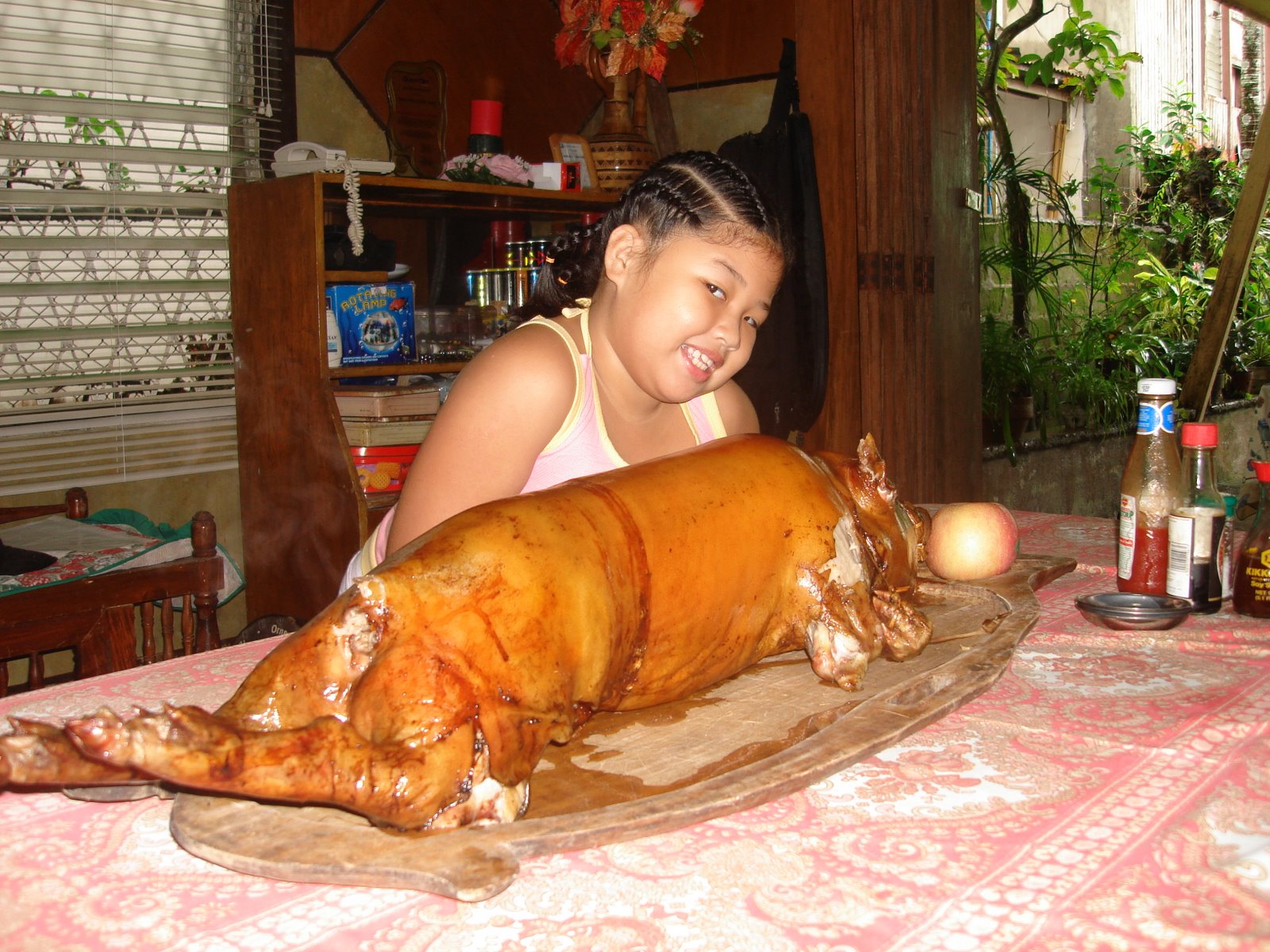 The ubiquitous lechon or roasted pig is the quintessential centerpiece of the Filipino banquet and nothing whets the Pinoy appetite more than the sight, sound and taste of crispy, golden red pork skin followed by generous slices of hot, juicy and tender pork meat.
The ubiquitous lechon or roasted pig is the quintessential centerpiece of the Filipino banquet and nothing whets the Pinoy appetite more than the sight, sound and taste of crispy, golden red pork skin followed by generous slices of hot, juicy and tender pork meat.My experience with the art, for it is an art, of lechon making dates back to my boyhood days when the actual killing and roasting of pigs for our family's parties and celebrations were all done in the backyard of the family home.
That meant waking up early in the morning for the exciting task of capturing the unfortunate porker whose turn it was to grace the party table.
My parents always kept a one or two pigs in a small enclosure that doubled as a pig's sty in one corner of the yard. The coming of the lechonero, the pig butcher, always seemed to me an ominous sign, an arrival signaling doom for the condemned pig like the imminent approach of the executioner at the executioner's block.
For a moment, as a young boy, I would feel dread but such squeamish thoughts were quickly driven away by the visions in my mind of crackling pork skin, succulent flesh and the memories of the tantalizing aroma of roasted pig.
The victim is then dispatched with a special knife designed to cut a hole in the throat and stab the heart or lungs with the intention of causing almost instantaneous death. The blood gushes out and is quickly collected for later use in the making of dinuguan or pork blood stew.
Using hot, boiling water and scrapers, the skin is then freed of all body hair, cleaned thoroughly and prepared for the grisly procedure of cutting open the belly and removing all of the internal organs which are then washed clean and sent to the kitchen to be made into delectable side dishes.
Then the pig's carcass, now a glistening pinkish white, is then impaled on a stout wooden pole, the insides salted and stuffed with bananas and lemon grass and the belly incision sewn shut. The hind legs and snout were then secured to the roasting pole by hemp straps soaked in water to prevent them from burning during cooking.
Then hours before the start of the party, the roasting over glowing embers of mangrove wood begins and this is where skill and timing defines the art of lechon making. The type and quality of the wood, the placement and positioning of the embers, the speed at which the roasting pole is rotated to ensure even cooking, and the instinct and knowledge needed to determine the perfect time to pull the pig out of the fire and serve it - all this come together to produce the perfect lechon. One that has hot, crispy skin on the outside and well-cooked, juicy meat in the inside.
Doctors and nutritionists badmouth the lechon as an example of gastronomic overindulgence. They point to the high levels of cholesterol and a multitude of other not so desirable substances present in this mainstay of the Pinoy festival table.
But Filipinos will continue to gorge on this delectable delicacy irregardless of the health risks. There is something about the lechon that invokes the spirit of celebration and the love of culinary excess that lies within the Filipino psyche. It symbolizes not only good eating but speaks of joy and festivity, of abundance and indulgence, of generosity, gratitude and optimism for the future.
Pigging on lechon may be unhealthy but it is good fun and good eating. For both reasons and more, Filipinos will continue to gorge on this irresistible delicacy while doctors and health experts wring their hands in frustration in the sidelines.
For the good things in life, it seems, one has to take risks, especially when rewards are simply heavenly delicious.
No comments:
Post a Comment